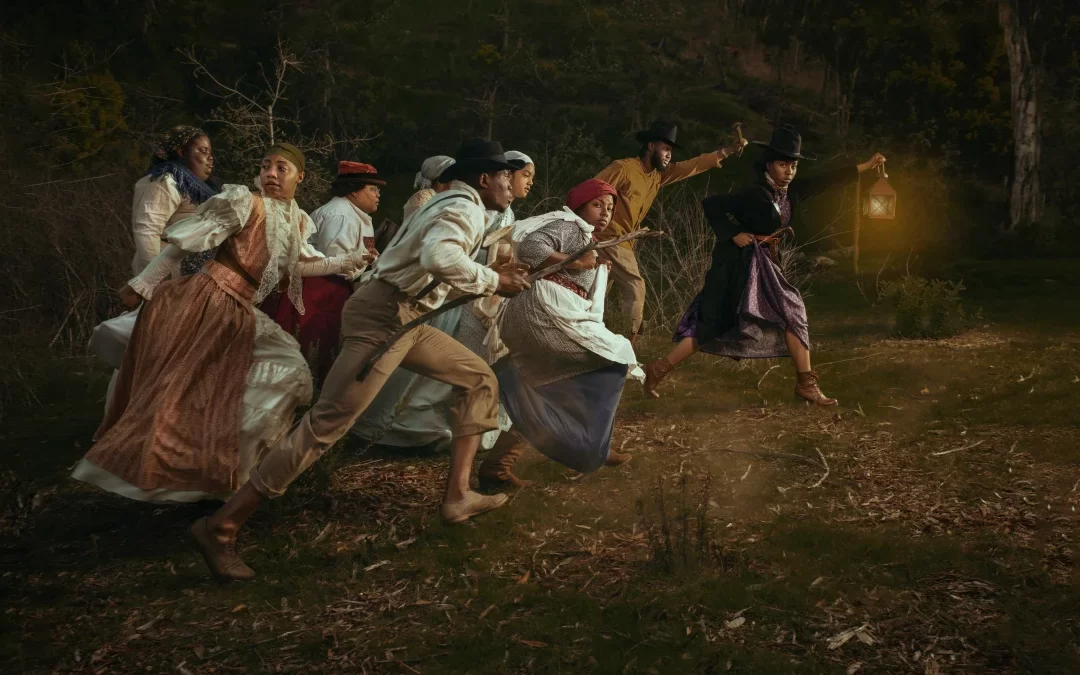“Harriet Tubman reveled in defying men, defying governments, defying slavery and defying slave catchers who put a $40,000 bounty on her head. This Black woman who stood five feet tall was utterly and completely fearless.” Deneen L. Brown
Winter 1852. Maryland – 20 miles south of the Pennsylvania line: The 11 slaves crouched on the trail beside the road until the slave hunters passed. A young boy in the group was terrified and wanted to go back. Moses placed the pistol to the forehead of the youth and cocked the trigger. “We ain’t going back,” Moses whispered. “We’ll be free or die. Lynch us all. Now get going.” Led by Moses, the most feared and legendary conductor on the Underground Railroad, the slaves continued walking along the path toward Philadelphia and freedom.
In March 1822, Araminta Ross was born into slavery on a plantation in Dorchester County, Maryland. She was the granddaughter of a slave from the Asante tribe in Africa, known for their unconquerable spirit and iron will. As a child she preferred to work in the tobacco fields rather than do domestic work.
It was in the fields where she first heard talk of the Underground Railroad – a secret network of paths, trails, and houses organized by whites, free blacks and Christian abolitionists that stretched from Maryland to Canada. The purpose of the network was to provide food, communication and sanctuary for slaves walking to their freedom in the North.
In 1844, Edward Broadus, Araminta’s owner, gave her permission to marry John Tubman, a free Black man. She took his name and her mother’s name, Harriet. After the brief ceremony, Harriet remained on the Broadus plantation. In September 1849, to avoid being sold on the auction block to Georgia cotton plantation owners, Harriet fled in the night. She followed the Underground Railroad to Philadelphia where she worked as a maid in a hotel.
Six months later, Harriet discovered that her sister and her two children were to be sold at auction. She returned to Dorchester County and led them to Philadelphia. Several months later, Harriet came for her husband, brother and two friends, only to learn that her husband had remarried. She led the others to freedom.
Emboldened by her success and a belief that God wanted her to liberate others, Harriet adopted the code name “Moses” from the Bible and began making more trips. She always moved at night and preferred to leave Maryland on Saturday night. There were no Sunday papers and slaves who escaped would not be news until Monday giving Moses a two-day head start.
During the 1850s, Maryland had more runaway slaves than any southern state. Although there were several conductors on the Underground Railroad, Moses was the most notorious. Slave owners were acutely aware of the stories about her, the savior of slaves. Slave owners did not know if Moses was black, white, man or woman; they just wanted Moses dead. There was a $40,000 bounty ($1 million today) for Moses, dead or alive.
During the decade before the Civil War, Moses made 19 trips to Maryland and led more than 300 slaves to freedom. Guided by the North Star and God whom she trusted to show her the way and to take care of the details, she never lost a passenger.
When the Civil War began, Harriet worked for the Union Army, first as a cook and then as an armed scout and spy. On June 3, 1863, she led 150 Black union soldiers on a steamboat up the Combahee River in South Carolina and freed 750 slaves. The small freedom fighter with the big pistol is the only American woman to lead a military raid during the civil war. After the war, Harriet moved to Auburn, New York, where she was active in the women’s suffrage movement until her death in March 1913 at age 91.
“Twant me, twas the Lord.” Harriet Tubman once said of her bravery. “I always told Him, ‘I trust you. I don’t know where to go or what to do, but I expect you to lead me,’ and He always did.”

Great story.